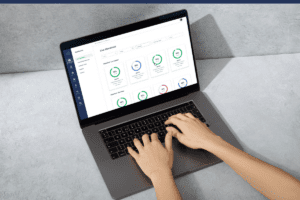How Technology Can Reduce Fraud At Your Career Institute
Software that creates a timestamped record of every student’s clock-in and clock-out and automatically transfers that data into the SIS can help protect against student and instructor fraud while improving administrative oversight at your career institute.
Like every business, career colleges are susceptible to many different types of fraud. Unfortunately, career institute fraud can be as simple as a student signing in for another or as complicated as a fraudulent identity theft complaint.
While the most common fraud comes from students, instructor and administrative fraud can also occur. The hardest part of running a career college is that fraud isn’t always ill-intentioned! Sometimes instructors end class early for one reason or another, without fully realizing the compliance consequences for their actions. They may also be unaware that they’ve ended class early on multiple occasions.
Preventing fraud and ensuring accurate attendance data is critical for career institutes to complete Return to Title IV on time and successfully pass accreditation audits. Fortunately, secure attendance technology helps prevent student, instructor, and administrative fraud while creating a clear audit trail.
Reducing Student Fraud at Career Institutes
Student fraud can occur in every career institute learning environment—on-ground, externships, and online. Students may forge signatures, lie about the time spent in an externship, buddy punch, or complete an assignment online for a friend. Implementing an attendance technology with strong verification requirements that works across multiple environments can help prevent fraud.
In externships, for example, schools leverage a GPS-based attendance solution that does not allow students to check in until they are physically at the site. For an added layer of security, schools can add a QR-code check-in to the specific externship room. The only way students could check in on behalf of a friend is with their friend’s phone. But, let’s be honest, what student will just hand off their phone for hours at a time? CourseKey partner schools have yet to see an instance where students are willing to separate from their phones for most of the day to allow a peer to sign in for them.
Students check-in using Face ID or a Fingerprint scan in an online environment, verifying that it’s actually the student enrolled in the course earning time even when an instructor cannot see them.
Strong, verified records are critical for successful audits and keeping your school safe from findings, compliance issues, and other legal concerns.
Protection Against Identity Theft and Borrower’s Defense Claims
After two major student loan servicers announced that they are suspending student loan servicing operations, many schools received identity theft complaints from former students who said they never attended the school. Schools can pull transcripts, ID copies, and other collateral to defend against these claims, but some schools have quickly put these claims to rest with verified attendance records that prove the exact number of hours a student was in class daily, down to the second.
Strong attendance records can also help schools defend against students who make fraudulent claims that they could not complete their program because instructors started class early/stopped class late. Because attendance technology like CourseKey Attend stores records in the cloud, administrators can refute a fraudulent claim with clear evidence from the courses in question. That being said, sometimes instructors don’t begin and end class on time, and it’s vital to catch these instances before they become trends.
Reducing Instructor Fraud at Career Institutes
While dismissing class early one time may not seem like a big deal to a busy instructor, it can endanger your school if it becomes a trend. When an instructor manually enters student attendance, administrators have no insight into whether the data is accurate or if the instructor is actually ending class early once a week to catch the latest episode of Jeopardy. Early class dismissal is particularly a problem in night courses when administrators have gone home for the evening.
With an attendance solution that automatically transfers down-to-the-second attendance data into the SIS, instructors are no longer responsible for manually entering attendance data, reducing the chances for inaccuracy and fraud.
Improving Administrative Oversight at Career Institutes
In addition to reducing both student and instructor fraud, attendance technology improves overall administrative oversight with two key features:
- Adjustment notes
- Reports
Reducing fraud with adjustment notes
While instructors can go in and edit student attendance data once it’s already in the system, a strong attendance software will require a note for every change made to student records. For example, if an instructor is consistently ending class early and editing the data, they would have to adjust every student’s data for every class with a note about why they made the adjustment, providing visibility and transparency into the process. Administrators can identify instructor discrepancies quickly and use adjustment notes to ensure that their peers aren’t inflating student time to improve retention rates.
Reducing fraud with reports
When selecting an attendance software, look for one with robust reporting techniques that allow administrators to discover and address compliance concerns quickly. Critical fraud reports include:
- Attendance deviating from schedule: With a report that shows which courses are starting late or ending earlier than scheduled, administrators can monitor for concerning trends and proactively address concerns with an instructor before a compliance issue occurs.
- Courses taking a break: Administrators can identify which courses take required breaks and gain insight into the quantity and length of breaks, ensuring that breaks aren’t too long or too frequent.
- Adjustment summary: An adjustment summary shows administrators a record of every adjustment made to a student’s time with notes. Administrators can determine the frequency of adjustments by campus, instructor, and course adjustments to check for compliance issues.
Unfortunately, academic dishonesty, attempts to game the system, and fraudulent reporting come with the territory for educational institutions. If you’d like to learn more about how CourseKey helps schools identify and reduce fraud, request a demo below.
Recent Articles

















